What is a Website Landing Page?
A website landing page is a single web page with a primary call to action typically created in support of a specific campaign or offer. Built with a single goal in mind, website landing pages have a significant emphasis on conversion rate performance. Marketing teams very often conduct extensive conversion experiments on landing pages in order to increase the number of leads or sales generated from these pages.
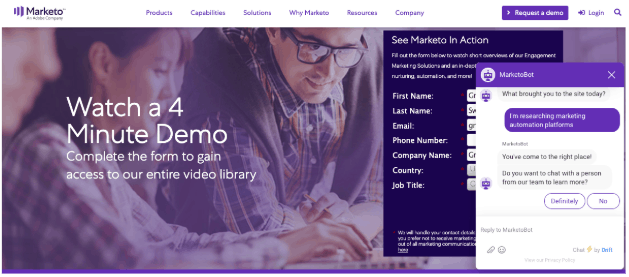
Marketers use landing pages for a variety of different reasons. But ultimately, their main purpose is to prompt site visitors to take a specific action. A successful landing page will convert your visitors into leads or customers, and connect them to the right people within your company. Having a single focused objective (your primary call to action) is what makes website landing pages your best bet to drive conversions.
Landing Pages vs Website Pages
Some people loosely define landing pages as “a page you land on.” But that could be any page on your website: your homepage, your about page, your product page–literally anything.
Landing pages are built to convert. That’s the main difference between a website landing page and a homepage–and any other page for that matter. Your homepage gives a full overview of what your business does and acts as a launchpad for all other (permanent) pages of your site.
A landing page, on the other hand, is focused on one specific topic and compels visitors to take one specific action. Traffic can come from several different sources like paid ads. And it’s not necessarily meant to be a permanent fixture on your site.
Landing Page Layouts & Formats
Website landing pages have come a long way over the past few years. Let’s consider the three main types you can build today.
Landing Pages with Forms
This is the most common type of website landing page you’ll come across. A traditional landing page uses a lead form to capture your visitor’s information in exchange for the offer being promoted.
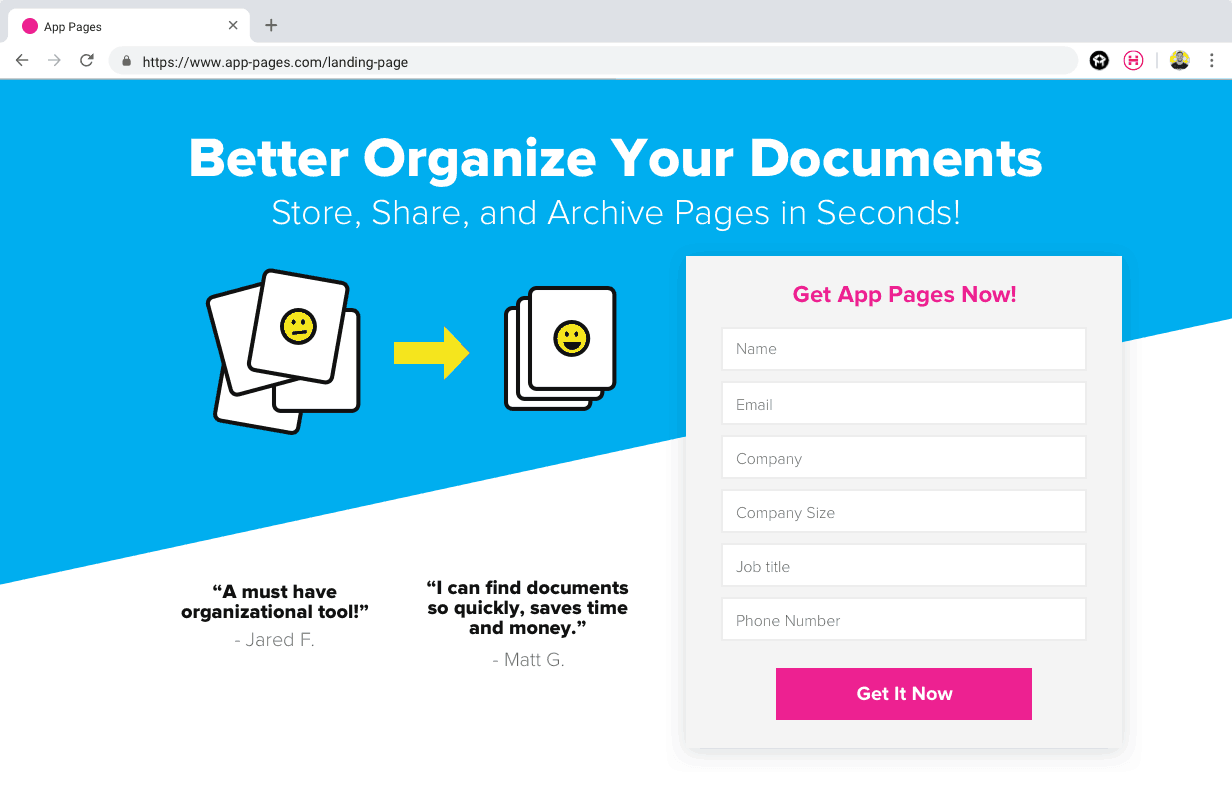
This is where companies will request information like name, email, company size, location, budget, website URL, credit card number, mother’s maiden name etc. But seriously, people don’t want to spend time filling out form after form. Less is more here–only ask for the information you really need.
Conversational Landing Pages
Here’s where things get a bit more interesting. Conversational landing pages allow you to engage visitors while they’re live on your page through chatbot software.
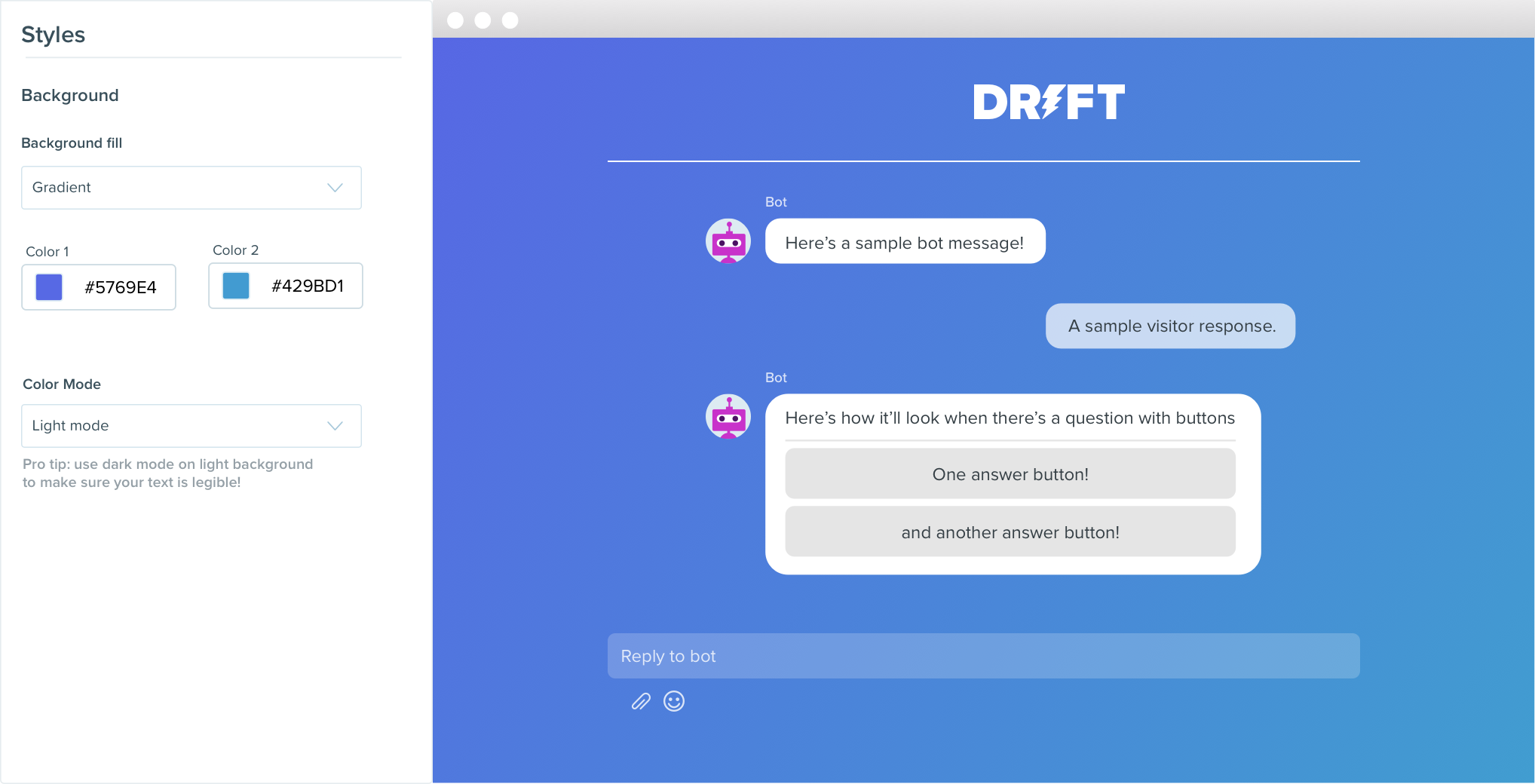
You can ask your visitors strategic questions through an interactive bot and guide them to take a specific action. Conversational Landing Pages take up the entire screen–no forms. Just conversations.
This is a great way to have visitors really focus on the conversation you want them to have. You can use conversational landing pages for webinar registrations, demo requests, capturing leads during events, and for showcasing content alongside an interactive bot.
Since the internet has become saturated with B2B companies promoting content, using bot-enabled website landing pages is a great way to stand apart from the competition.
Although these pages are best used as a form replacement, try and steer clear of the usual “form” questions like first name, last name, etc. Instead, focus on creating a frictionless experience and leverage data enrichment to do the dirty work of finding first and last names, and company name after getting a business email.
Traditional Landing Pages with Bots
This third type is a hybrid between traditional website landing pages and Conversational Landing Pages. Instead of ditching all your traditional pages, you can embed a chatbot onto your existing landing page to create a customized chat experience for your site visitors.
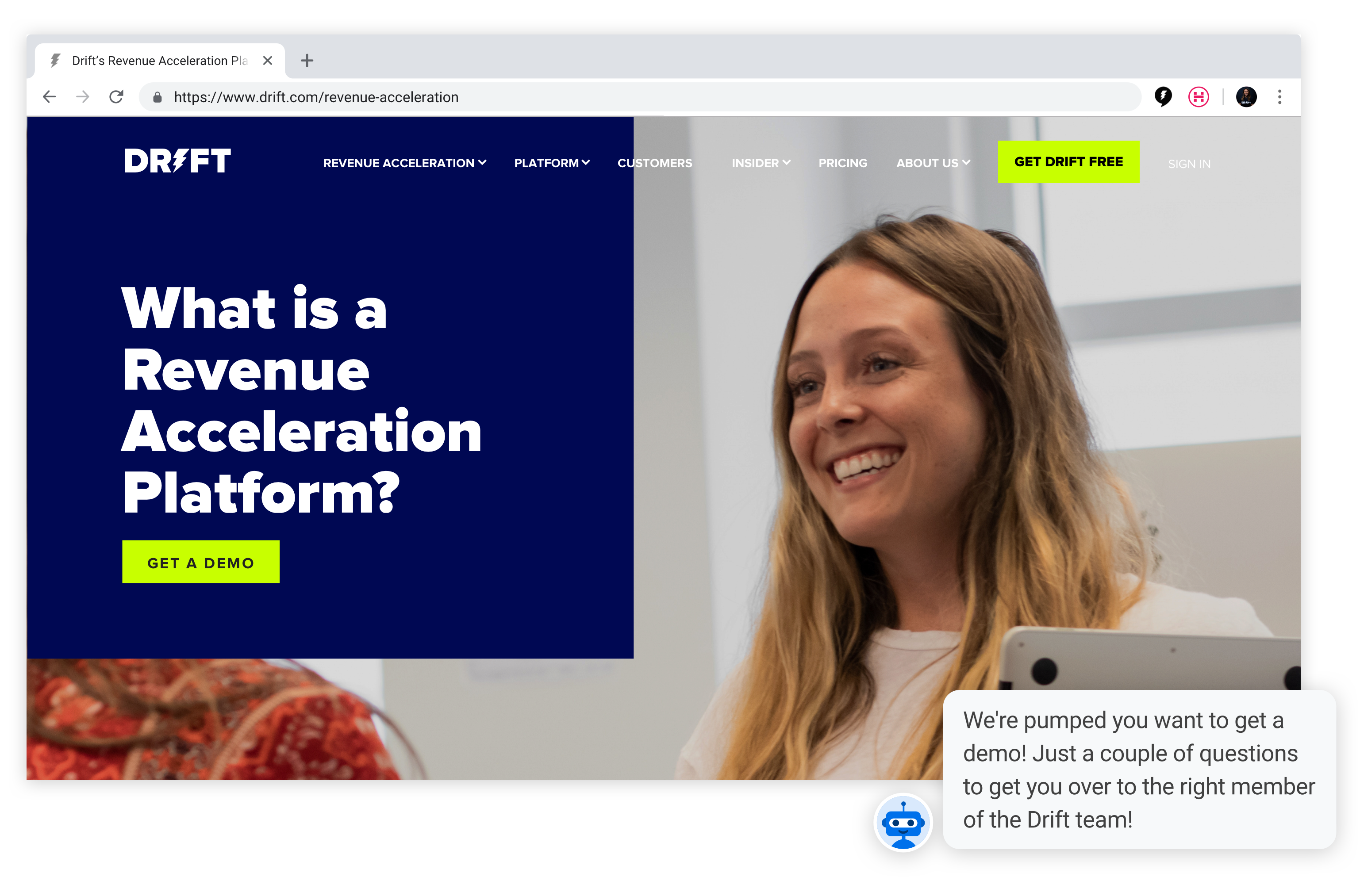
This is a great way to engage your visitors and increase the conversion rates on these pages.
Landing Page Best Practices
What makes an effective landing page? Here’s what it takes to drive conversions.
Set A Clearly Defined Goal
Before you start building a new website landing page, consider why you’re creating one in the first place. Set a specific goal. It’s a cliché but it’s true: You can’t score without a goal. You want to ensure your landing page is tied to a business or marketing outcome.
You can’t score without a goal. You want to ensure your landing page is tied to a business or marketing outcome.”
Ask yourself what you want your visitors to do, then decide what clear call to action will compel them to do it. Only then can you get to writing and designing a landing page that will motivate your visitors to take the specific action you want them to take.
Write Compelling & Convincing Copy
To be successful, your landing page needs to tell your visitors what they’ll get out of your offer. And that comes down to great copywriting. To write a landing page that converts, speak your buyers’ language. What do they have to win by engaging with you?
7 Tips to Writing Great Landing Page Copy
1) Focus on your buyers
This rule applies to all the copy you write for your business. To write a landing page that converts, speak your buyers’ language. What do they have to win by engaging with you? Think about your buyers’ experience holistically and what happens after they give their contact details.
2) Keep it clear and concise
If you’re not clear, your site visitors won’t spend time trying to figure out what you’re offering. Our attention spans aren’t getting any longer. Edit your landing page until the message is concise and persuasive enough to incite visitors to take action. Kill your darlings–ensure every sentence serves a purpose. If it doesn’t, cut it out.
3) Use action-oriented language
Landing pages are all about taking action. Rather than just informing your visitors, make sure your writing drives action. What does that mean? Start your sentences with verbs (just like this one) and use an active voice to keep visitors engaged.
4) Describe the benefits
No one cares about you. To put it less bluntly, your visitors don’t want to hear about how great your company or product is. Focus on how your offer benefits them, and what problem those benefits solve. Transform your landing page copy by asking yourself “So what?” for every line you write. What’s in it for your buyers? Why should they care?
5) Create a sense of urgency
No need to get overly dramatic here, but creating implied urgency through your copy is one way to encourage your visitors to take action. Test using words like “now,” “today” and “instant” to provoke quick responses. Taking a “stop what you’re doing” approach also works to tell visitors that their current actions are hurting their business.

6) Address potential objections
Anticipate your visitors’ objections and overcome them in your landing page. This persuasive technique shows visitors’ you truly understand them and helps to instill a sense of trust.
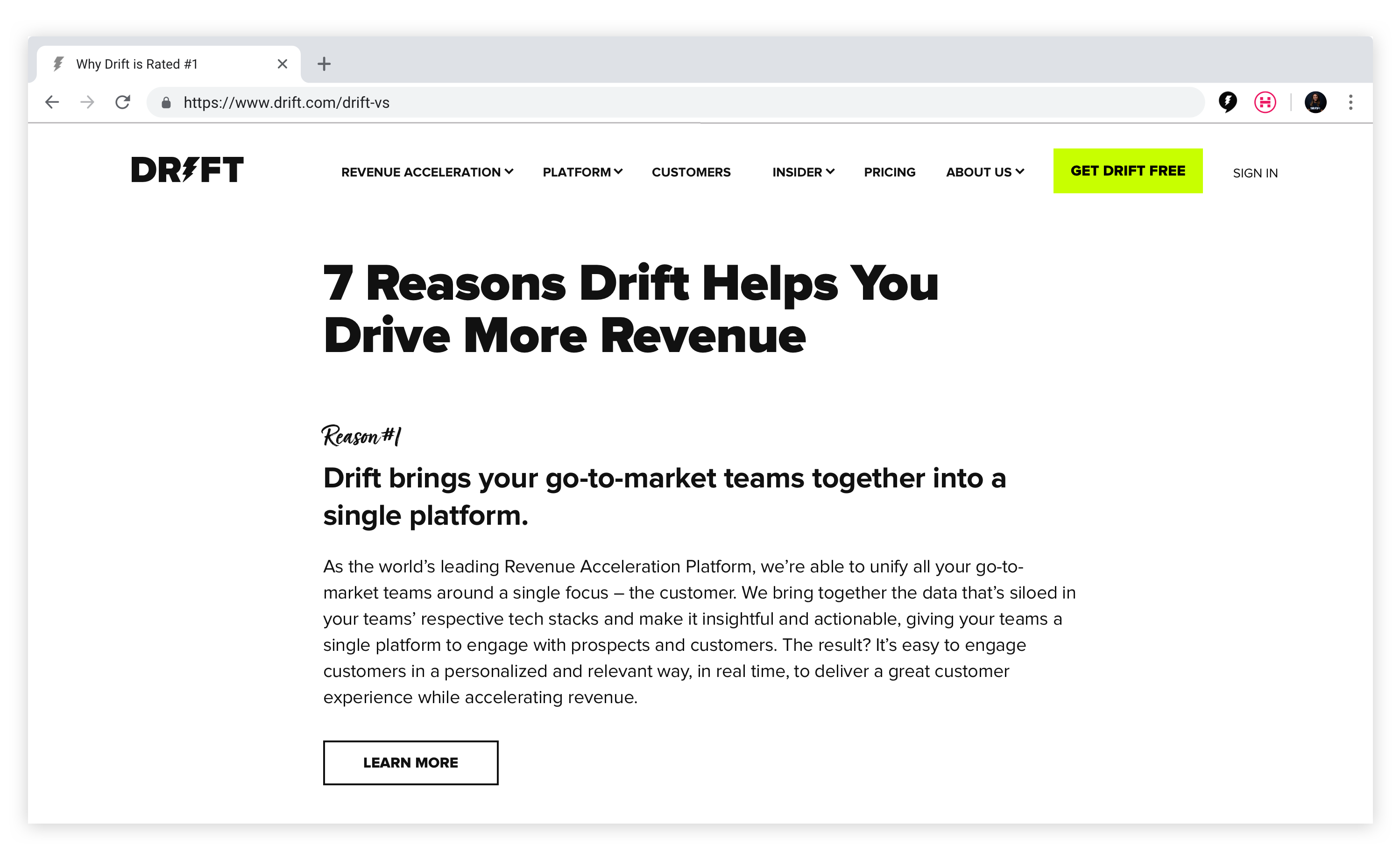
7) Use social proof
Using social proof is one of the most powerful ways to boost landing page conversions. Add short testimonials from happy customers or embed social media posts from people that positively reflect your brand to your pages. Combining a sense of urgency with social proof creates a sense of FOMO (fear of missing out) and will prompt your visitors to act fast.
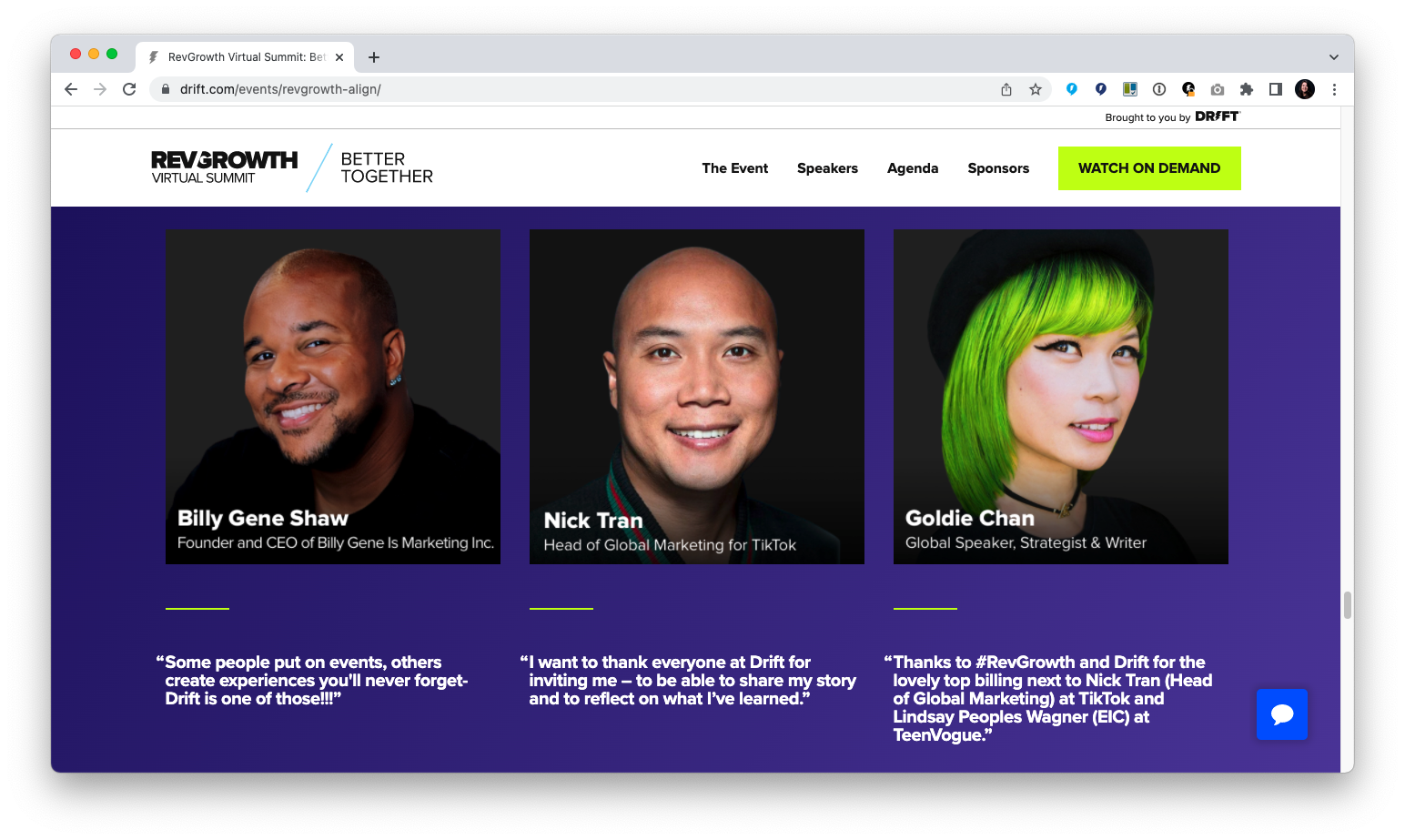
How to Make Your Landing Page Design Pop
How are top companies building and optimizing landing pages today? Discover the latest trends you should know.
Animations
Including elements of animation will make your landing page stand out from all your competitors’ static pages. Here’s an example from MailChimp:
Videos
Adding videos to your landing pages that explain your product benefits can work wonders to convert more customers. Here’s how PageCloud did it:
Dynamic typography

Custom photography
More and more companies are saying goodbye to cringey stock photography. RIP stock photos (and good riddance). Using authentic, custom photos on your landing pages humanizes your brand. We’re all tired of seeing the same stock photos online so custom photography is like a breath of fresh air for your visitors. Here’s what Airbnb does:
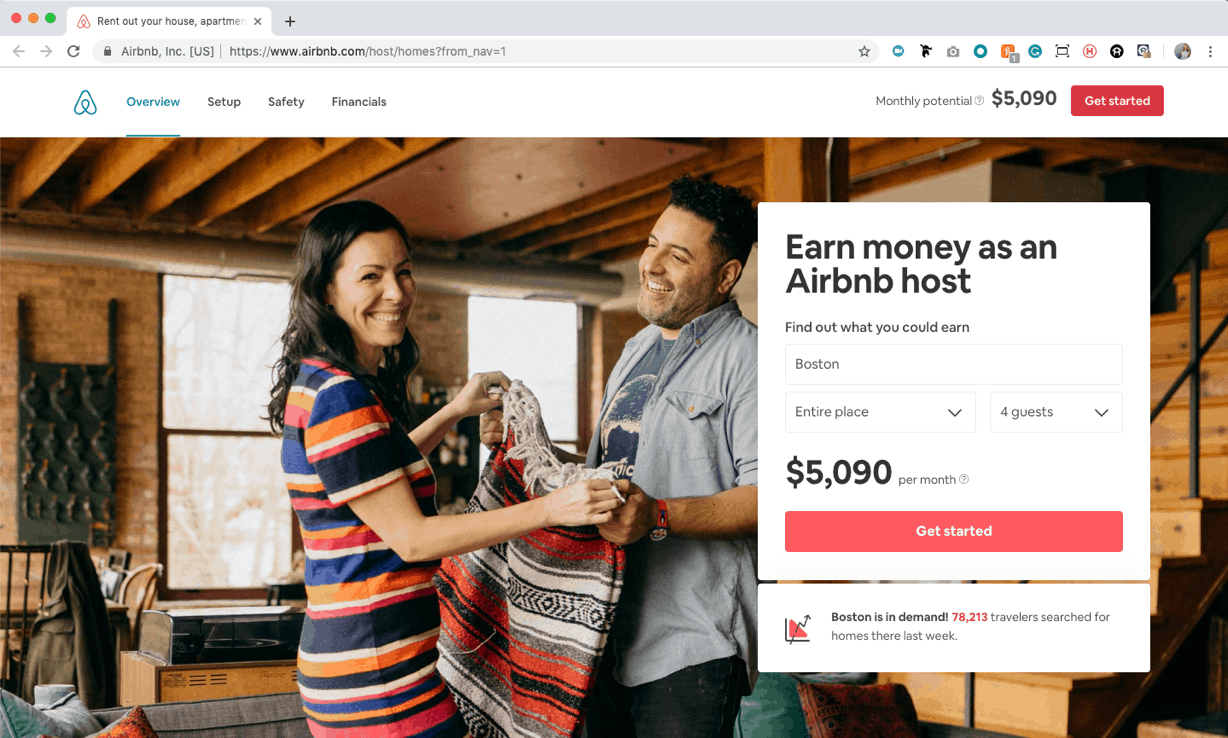
Be consistent
Keep your landing page designs consistent with your brand. Even if the page isn’t a permanent fixture on your website, you want to provide a consistent customer experience across all channels.
Avoid visual clutter
Keep the design simple and include plenty of white space. This helps you draw attention to the most important elements of your landing page.
Remove your site navigation
You want your visitors to take a specific action on your landing page–not get distracted and navigate away. Remove your main navigation menu to avoid killing your conversion rate.
Include videos to illustrate your value proposition
Many companies see a huge jump in conversion rates by adding videos to their landing pages. Videos encourage people to stay on your page longer and increase trust.
Make sure your video has a clear purpose that’s aligned with your landing page goal. You don’t want your video to distract from your CTA–you want it to push people towards a decision.
Include social sharing buttons
This makes it easy for people to spread the landing page love to their personal networks. Why not let your visitors do some of the work for you?
Ensure the page looks great on mobile
Every landing page you create needs to be mobile friendly. Mobile is the #1 way people use the internet today so you want your landing pages to look just as fabulous on mobile as they do on desktop.
Ensure minimal scrolling
This point comes back to keeping your landing page as simple and clear as possible. In traditional landing pages, place your CTA above the fold to ensure your visitors don’t have to scroll for days before converting.
7 Ways to Promote Landing Pages
How do you use landing pages for your business? Let me count the ways…
1. Content Download
Just published a new research report? Created a how-to guide? Use a lead capture landing page to give your site visitors instant access to your latest content in exchange for personal data.
2. Infographics
Have you conducted research and are looking for another way to express your insights outside of a report of white paper? An infographic is a great alternative as people find data visualizations a more interesting way to consume key insights. Metrics on page engagement for these types of pages like social shares and increased time on page are great benefits for SEO.
3. Event or Webinar Registration
Hoping to draw a large audience for your upcoming webinar or live event? Spread the word through a lead generation landing page. You’ll grow your attendance and get more sign-ups.
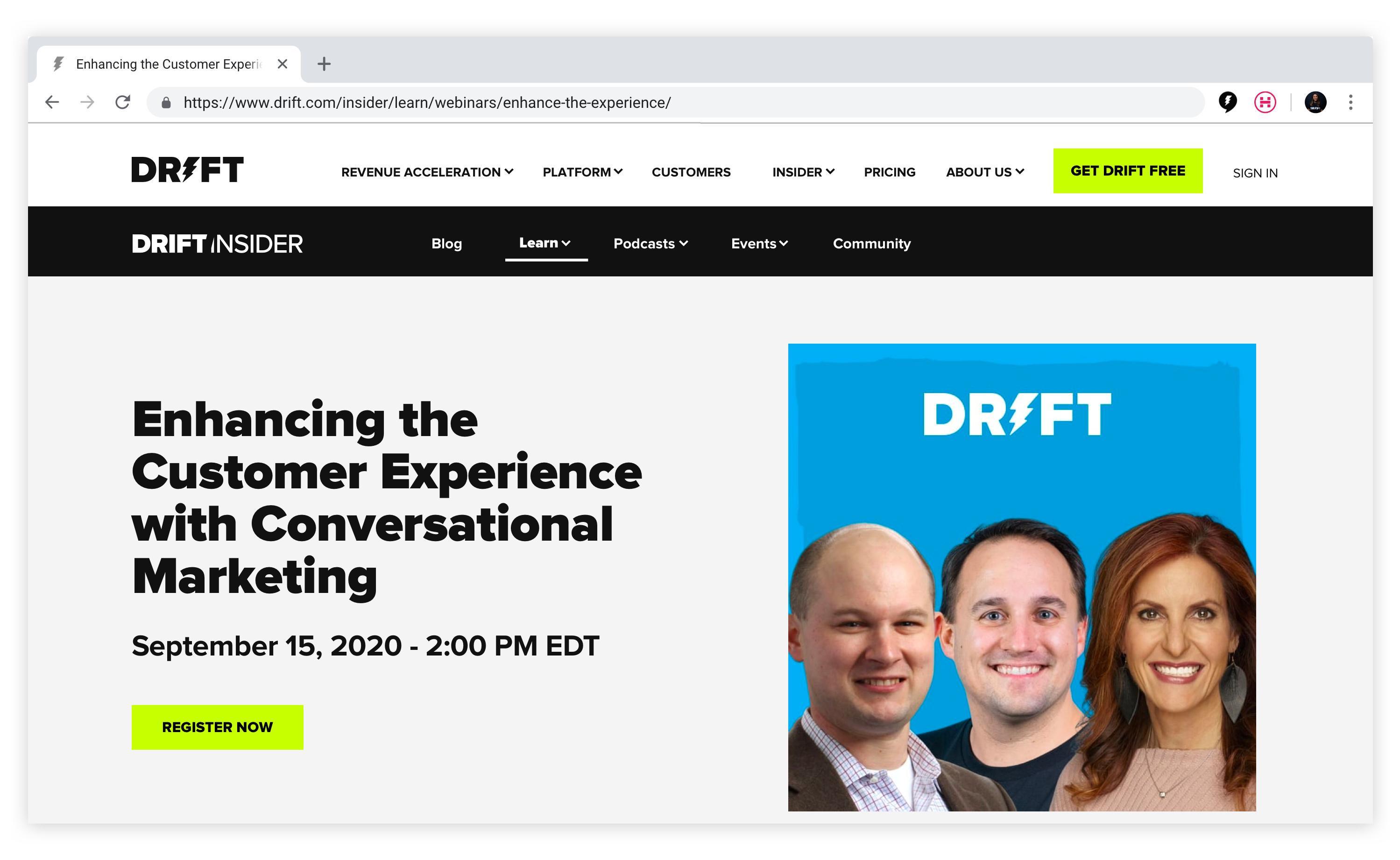
4. Request a Demo
Do you offer free demos? A well-crafted landing page that compels visitors to give your product a go will help you book more qualified meetings.
5. Product Detail
Launching or promoting a specific product? Use a landing page that outlines the benefits, features, design and testimonials, and prompts visitors to try or buy it. By creating a landing page separate from your main product page, you ensure a strong message match between the ad or link and your landing page.
6. Account-Based Marketing
To take an ABM approach, build a landing page that targets your ideal customers in the messaging. Then use focused paid advertising to reach this niche audience and boost conversions.
7. Email List Opt-In
Get more subscribers to your blog or newsletter by creating a dedicated landing page that prompts people to sign up. Tell people what they can expect and why they don’t want to miss out on your sweet newsletter.
How to Promote Your Landing Page
There are a few different ways you can drive traffic to your landing page. You’ll want to choose your tactics based on your goals and target audience.
Organic social
Promote your landing page through your company and individual employee social media accounts.
Paid social
Direct your visitors to your landing page from a social ad on LinkedIn, Twitter, Facebook or Instagram. This is where message matching is especially important.
Google Adwords
Send paid search traffic directly to your landing page through a PPC campaign.
Include a link to your landing page in emails part of specific workflows, or have your team members add a link in your email signature.
Direct Mail
Using direct mail as part of your account based marketing campaigns can be a great way to bring your offline efforts online. You can make these URLs extremely short by using a customer URL shortener to ease the burden on the user to find your page quickly. You could even consider including a QR code to easily bring the experience online.
Using direct mail as part of your account based marketing campaigns can be a great way to bring your offline efforts online.”
Content Syndication
Use third party vendors to promote your content via their promotional vehicles like e-newsletters, promotional email or others.
Landing Page Metrics to Track
How is your landing page performing? Connecting Google Analytics and Facebook Pixel Tracking to your pages makes it easy to track these landing page metrics.
Page views
How many visitors are coming to your landing page? Check your total page views and daily traffic volume to find out. Look for any patterns based on the day and pinpoint what promotion would have triggered any spikes in views.
Remember that not all metrics are equal–page views are worthless if you’re reaching the wrong audience and no one converts.
Remember that not all metrics are equal–page views are worthless if you’re reaching the wrong audience and no one converts.”
Traffic source
Where is the traffic coming from? How are visitors finding your landing page? This is a key metric to track because it tells you what is and isn’t working in terms of promotion. Are people coming to your landing page from a blog post CTA? Are social ads getting you the best results? Double down on what’s already working, but remember it’s important to have a diverse number of sources.
Conversion rate
Your landing page isn’t successful if you don’t reach your goal. For traditional landing pages, you can set up Goals in Google Analytics to monitor how many people took action on your page by completing a form or engaging with chat. You track completion rates with Conversational Landing Pages in a similar way and monitor how many visitors converted by providing their email.
Visitor to contact ratio
Are your landing page visitors converting? At the beginning of your campaign, you can set the number of contacts you need, then monitor the number of visitors to stay on the right track. You can track exactly who’s converting on your pages and set up triggers to launch follow-up workflows.
Landing Page Optimization
Once you’ve published your landing page, your work isn’t done. Always be analyzing, iterating and optimizing your page to increase conversions. Here are a few reasons why your landing page might not be performing.
You don’t know who you’re targeting
If you don’t know your target audience in the first place, how can you create a landing page that speaks directly to them? Go back to square one and figure out who you’re speaking to and why. Only then can you send the right message to the right people.
Go back to square one and figure out who you’re speaking to and why. Only then can you send the right message to the right people.”
Your form is too long
Gated content and old-school lead forms simply don’t work for all B2B buyers. That doesn’t mean you have to ditch your forms altogether, but try asking fewer questions to help increase conversions.
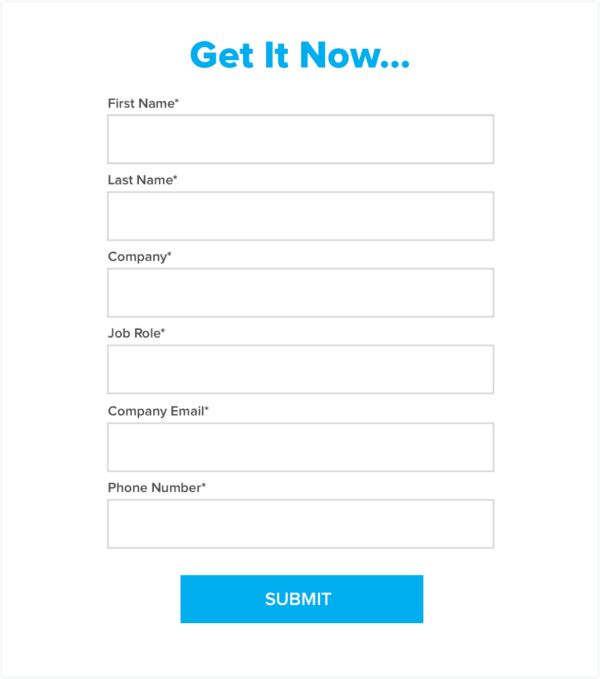
You have too many options
Do you have more than one CTA on your page? Your secondary CTA might be diluting your main message and detracting people from taking action on your landing page.
Your headline doesn’t grab your visitors’ attention
Your headline is the first thing visitors see on your landing page. So you’ve got to make it count. A specific and succinct benefit-oriented headline can dramatically increase your conversion rate. It always comes back to knowing and focusing on your users.
A specific and succinct benefit-oriented headline can dramatically increase your conversion rate.”
You’re missing a human element
You can make your brand more friendly and relatable through the right messaging and visuals. But sometimes, that’s still not enough.
Conversations are the fundamental way humans engage and understand each other. So why don’t we apply that principle to B2B sales and marketing? Making your landing pages conversational by using a chatbot. You can take visitors directly from an ad to a conversation to give them the answers they need now.
You’ve done zero promotion
There are several ways you can get the right people’s eyes on your landing page. But the biggest mistake would be to do zero promotion and just cross your fingers that people will stumble upon it.
You haven’t run any tests
A/B testing CTA button colors for the sake of it won’t get you very far in the long run. But it is important to strategically test specific elements of your landing pages for different segments and campaigns.
Have a clear testing plan and only test one element at a time, like the copy, layout, design or image. Split the traffic evenly between both pages, measure your results, and conduct follow-up tests if needed.
Continue Learning About Landing Page Optimization
Check out our handy guide to Conversational ABM. It’s totally free! You’ll learn how to apply ABM tactics to landing page optimizations & how to apply chatbots to boost landing page conversion rates.
The Guide To Conversational ABM
Learn how to strengthen marketing and sales alignment and find more opportunities for your sales team.